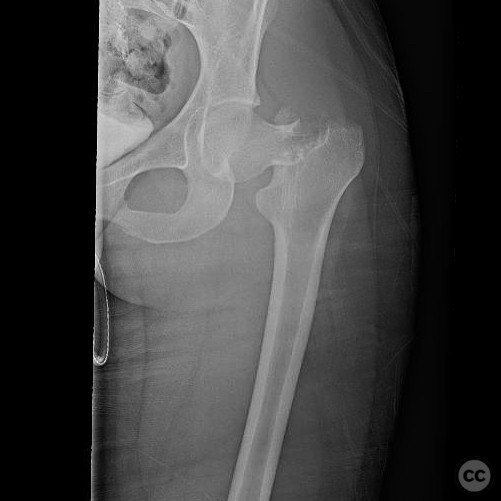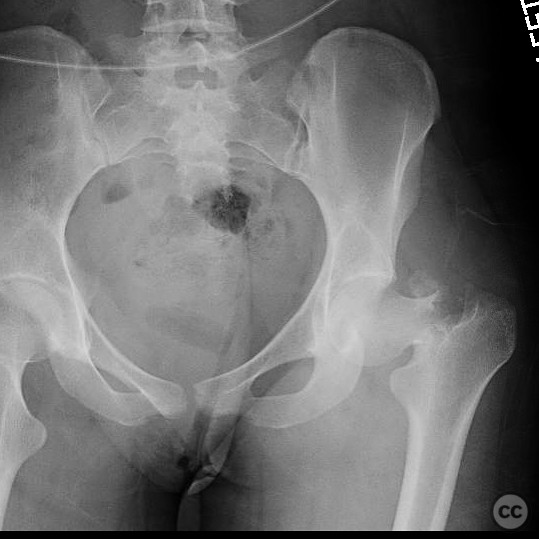Iatrogenic Greater Trochanteric Fracture During DHS Fixation.
Score and Comment on this Case
Clinical Details
Clinical and radiological findings: A 20-year-old male involved in a high-speed rollover motor vehicle collision presented with an isolated injury. Initial radiographs revealed a femoral neck fracture. The patient was otherwise stable with no additional injuries noted. Neurological and vascular examinations were unremarkable.
Preoperative Plan
Planning remarks: The preoperative plan involved a dynamic hip screw (DHS) fixation for the femoral neck fracture. The surgical approach was planned via a lateral incision to access the proximal femur and facilitate the insertion of the DHS.
Surgical Discussion
Patient positioning: The patient was positioned supine on a fracture table, allowing for traction and manipulation of the affected limb to achieve optimal reduction of the fracture.
Anatomical surgical approach: A lateral approach to the proximal femur was utilized. An incision was made along the lateral aspect of the thigh, followed by dissection through the fascia lata to expose the proximal femur. The vastus lateralis muscle was elevated anteriorly to access the lateral aspect of the femur for DHS placement.
Operative remarks:During the insertion of the DHS side plate, an iatrogenic fracture of the greater trochanter occurred, avulsing a portion of the bone with attached abductor musculature. This complication necessitated additional fixation strategies to stabilize the avulsed fragment and ensure proper reattachment of the abductors. The surgical team employed additional fixation techniques, including cerclage wiring, to secure the greater trochanter and restore abductor function.
Postoperative protocol: Postoperatively, the patient was advised partial weight-bearing with crutches for 6 weeks to allow for healing of both the femoral neck fracture and the iatrogenic greater trochanteric fracture. Progressive weight-bearing was planned based on radiographic evidence of healing.
Follow up: Not specified.
Orthopaedic implants used: Dynamic Hip Screw (DHS), Cerclage Wire.
Search for Related Literature

orthopaedic_trauma
- United States , Seattle
- Area of Specialty - General Trauma
- Position - Specialist Consultant

Industry Sponsership
contact us for advertising opportunities









Article viewed 139 times
28 Jul 2025
Add to Bookmarks
Full Citation
Cite this article:
Surname, Initial. (2025). Iatrogenic Greater Trochanteric Fracture During DHS Fixation.. Journal of Orthopaedic Surgery and Traumatology. Case Report 6633235 Published Online Jul 28 2025.